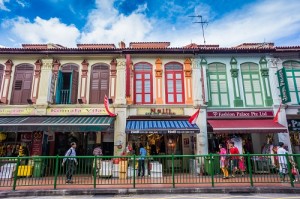
Investor appetite for shophouses in Singapore are showing signs of recovery, with overall transaction value rising over the past two years, reported the Straits Times, citing statistics tracked by CBRE.
In 2015, the total value of shophouse deals reached $657.3 million, and subsequently increased 7.6 percent year-on-year to $707.07 million in 2016. But the number of caveats submitted still hovered over 100 per annum.
This is an improvement from 2014, when the number of deals fell to 109, while the total value slumped to $592.29 million after the government introduced the Total Debt Servicing Ratio (TDSR) framework in June 2013. However, this is a far cry from 2013, when there were 206 caveats lodged, with a combined value of $1.27 billion.
“We are seeing rising demand for shophouses because investors still believe there’s growth potential in such assets as they have historical value and supply is limited,” said Sammi Lim, CBRE’s Director of Investment Properties.
In fact, the shophouse transactions recently brokered by CBRE show that these properties are now more sought-after by family offices, global property funds and other very wealthy investors, with investment budgets of between $10 million and $50 million.
For instance, a family office purchased a shophouse at 54 Boat Quay for $12.9 million, which works out to around $2,985 psf based on its floor area.
In another deal, three contiguous 999-year tenure shophouses at Amoy Street in Tanjong Pagar were sold to an institutional fund for $59.6 million, which translates to about $2,500 psf based on the floor area.
However, the asking prices for such property types are still high compared to what is being offered by buyers, noted Benedict Choa, who is considering to invest in a shophouse.
Looking ahead, CBRE’s Lim expect prices to rise by as much as five percent this year, while the number of caveats may increase marginally as more units become available.
“Generally, shophouse prices have been fairly resilient. This year, we could see a moderate rise in capital value as rents in the office sector start to stabilise” she said, explaining that office properties are considered a proxy for shophouses.
Romesh Navaratnarajah, Senior Editor at PropertyGuru, edited this story. To contact him about this or other stories, email romesh@propertyguru.com.sg
Related Articles:
Prime office rents down 1.5% in Q4 2016
New co-working space opens in the CBD
Frasers Commercial Trust’s value estimate lowered on lease uncertainties